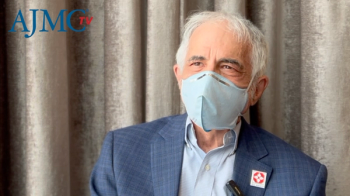
By 2026, National Health Spending Will Climb to 19.7% of Economy, Report Says
Driven by an aging US population and other economic and demographic factors, national health spending is projected to climb to 19.7% of the economy over the next 8 years, up from 17.9% in 2016, according to new estimates released Wednesday from CMS and published online in Health Affairs.
Driven by an aging US population and other economic and demographic factors, national health spending is projected to climb to 19.7% of the economy over the next 8 years, up from 17.9% in 2016, according to new estimates released Wednesday from CMS and published online in Health Affairs. That’s because the projected average annual rate of national health spending is expected to grow 5.5% annually on average in 2017 to 2026, outpacing average projected growth in gross domestic product (GDP) by 1.0 percentage point, economists said. Expenditures will rise to $5.7 trillion in 2026, from $3.3 trillion in 2016.
Economists in the Office of the Actuary at CMS, which published the report, said changes in projected income growth and enrollment shifts from private health insurance to Medicare are also behind the trend.
Price growth for medical goods and services is also expected to be a significant factor and is projected to increase gradually from historically low rates in 2014 to 2016 (1.1% per year) and average 2.5% per year for 2017 to 2026.
Consistent with other reports about healthcare spending, prescription drugs are a significant factor in the overall rise. Prescription drugs are projected to experience the fastest average annual spending growth over 2017 to 2026 (6.3% per year), which is largely attributable to increased spending on specialty drugs. Looking beyond 2018, the report says that the effect of prescription drug rebates will level off, which also contributes to a stronger growth in prices.
Spending growth in Medicare and Medicaid is another driver. Projected increases in the use and intensity of care over the next 8 years will contribute to rising growth in Medicare per enrollee spending, relative to recent nearly historic lows. In addition, Medicare enrollment is expected to rise as the youngest of the baby boomers begin to enter the program.
Medicaid will be affected by an increased enrollment of relatively more expensive, older and disabled beneficiaries who tend to have disproportionately higher use and intensity of care, compared with non-aged or non-disabled beneficiaries.
Over 2017 to 2026, personal healthcare spending growth is projected to average 5.5% per year, with average growth in prices (2.5%) and use and intensity (1.7%) expected to account for roughly 75% of this growth. Population growth and changing demographics account for the remainder of the projected average annual growth.
During a call explaining the report, economists were asked what effect new payment models had on these projections.
“We’re monitoring these payment models,” said Gigi A. Cuckler, a CMS economist. She said while there has been some savings, it has not been substantial, and it is too early to see a long-term impact.
Among the major payers, average Medicare and Medicaid spending growth (7.7% and 6.1%, respectively) is expected to continue to outpace that of private health insurance (4.7%) largely due to the aging of the population, including continued strong enrollment growth in Medicare (as baby boomers continue to enter the program) and Medicaid (reflecting a projected increase in the share of aged and disabled enrollees).
Other findings include:
- In 2026, 47% of national health spending is projected to be sponsored by federal, state, and local governments, up from 45% in 2016. This reflects, in part, the impact of shifting demographics, including the continued enrollment into Medicare.
- In contrast, the projected share of health spending sponsored by businesses, households, and other private revenues is expected to fall 2 percentage points over the projection period, from 55% in 2016 to 53% in 2026.
Economists also wrote that the repeal of the Affordable Care Act’s individual mandate requirement will have little effect on insurance coverage trends. The percent of those insured is expected to fall slightly (from 91.1% in 2016 to 89.3% in 2026), in part because of the mandate’s repeal.
Despite the uncertainty swirling around health policy, these projections are created using current laws already in place, and do not assume potential legislative changes.
Reference
Cuckler GA, Sisko AM, Poisal JA, et al. National Health Expenditure Projections, 2017—26: Despite uncertainty, fundamentals primarily drive spending growth. Health Aff. 2018;(37)3. Published online February 14, 2018. doi: 10.1377/hlthaff.2017.1655.
Newsletter
Stay ahead of policy, cost, and value—subscribe to AJMC for expert insights at the intersection of clinical care and health economics.

















































